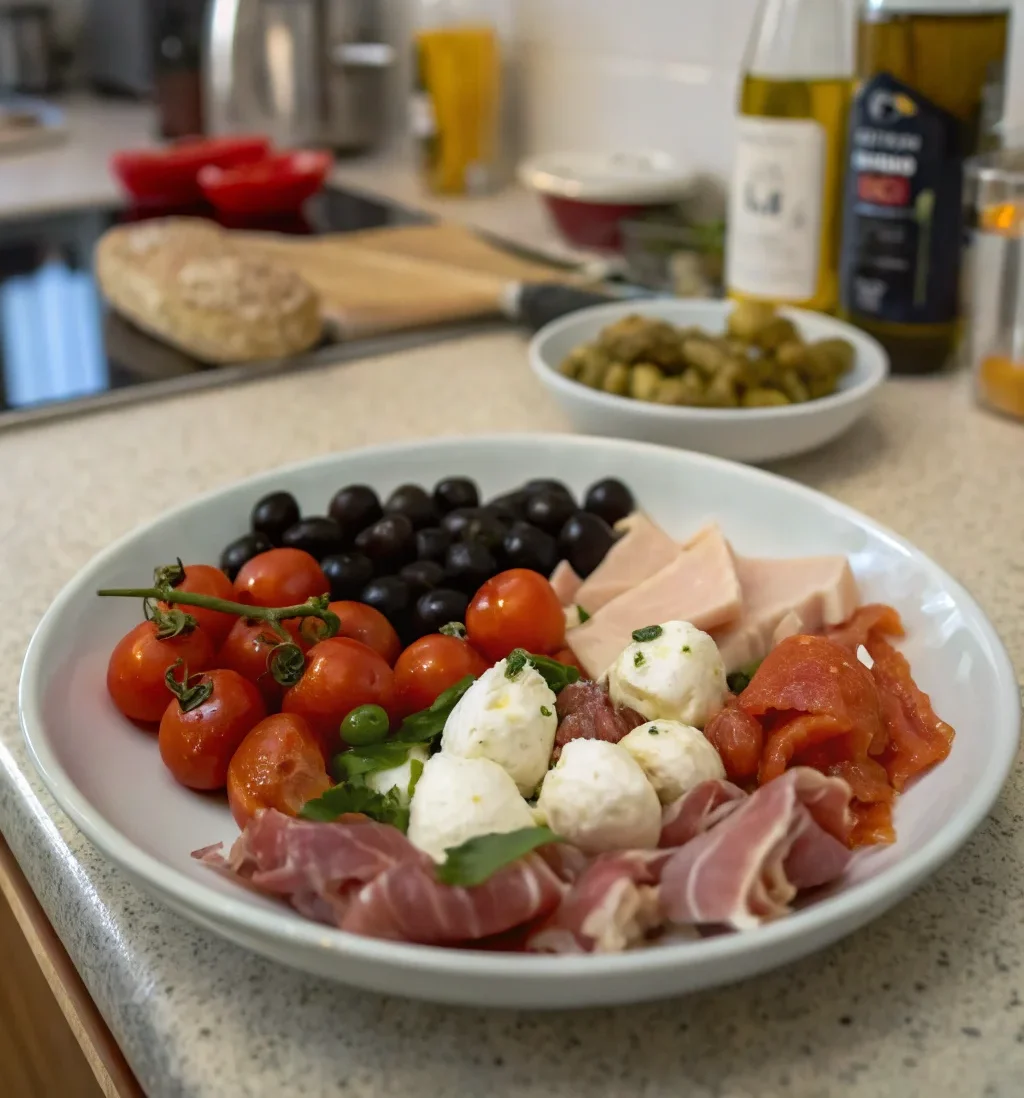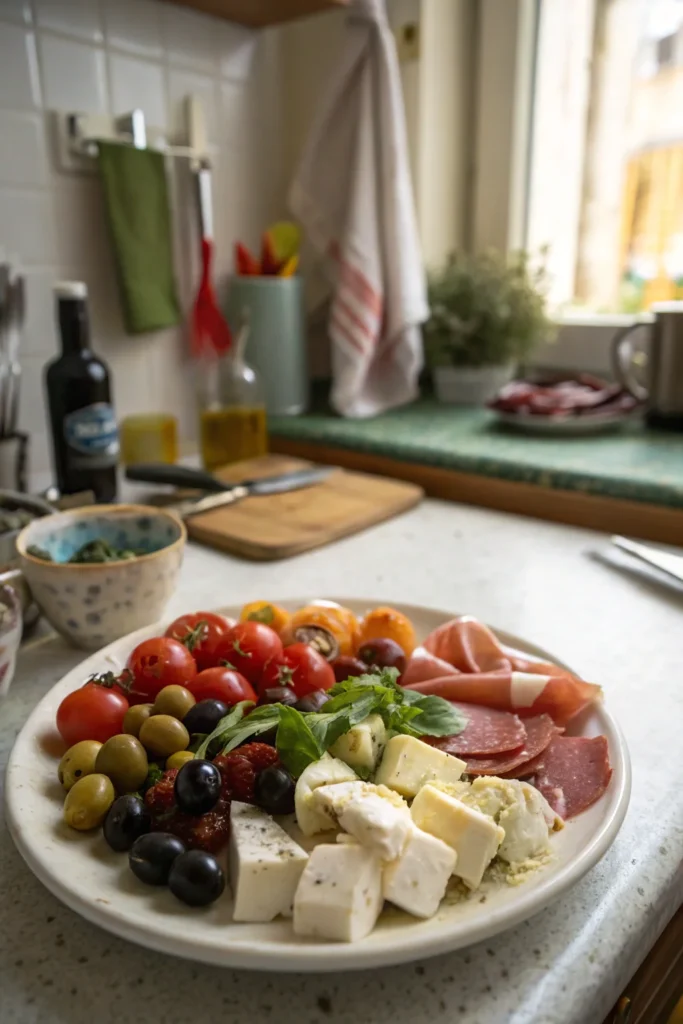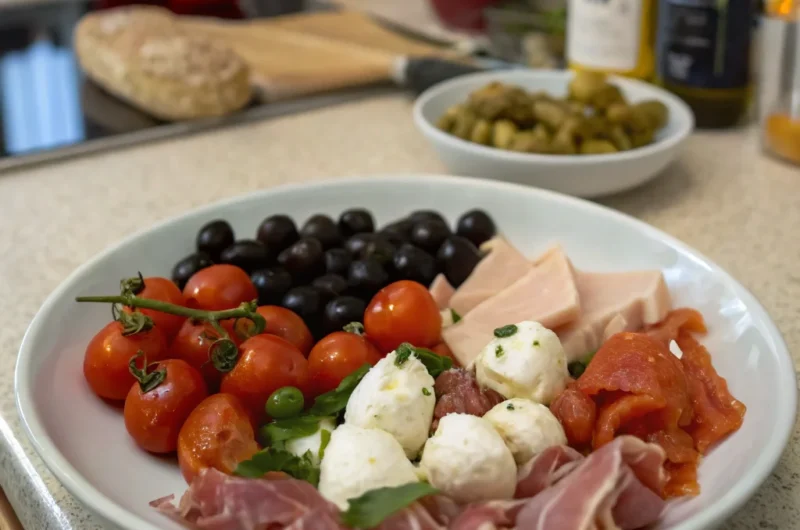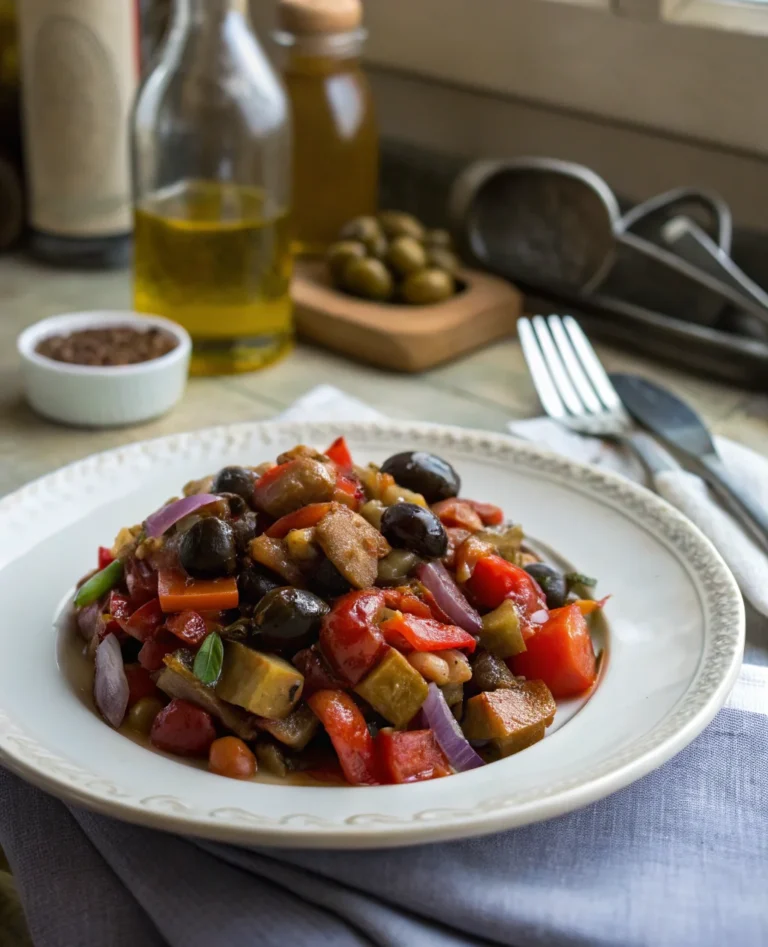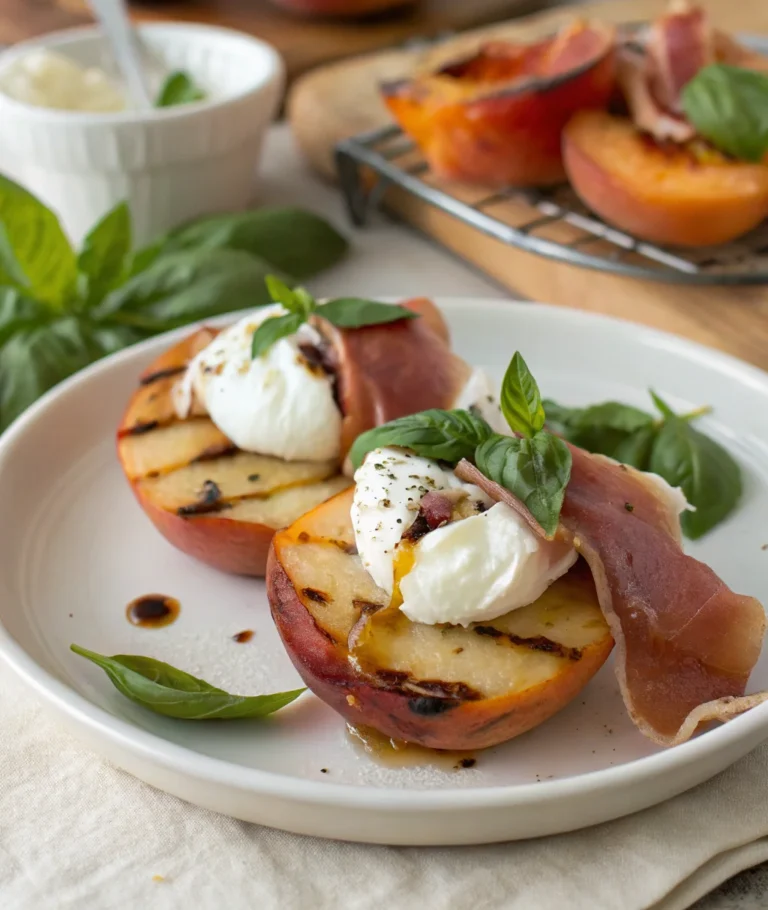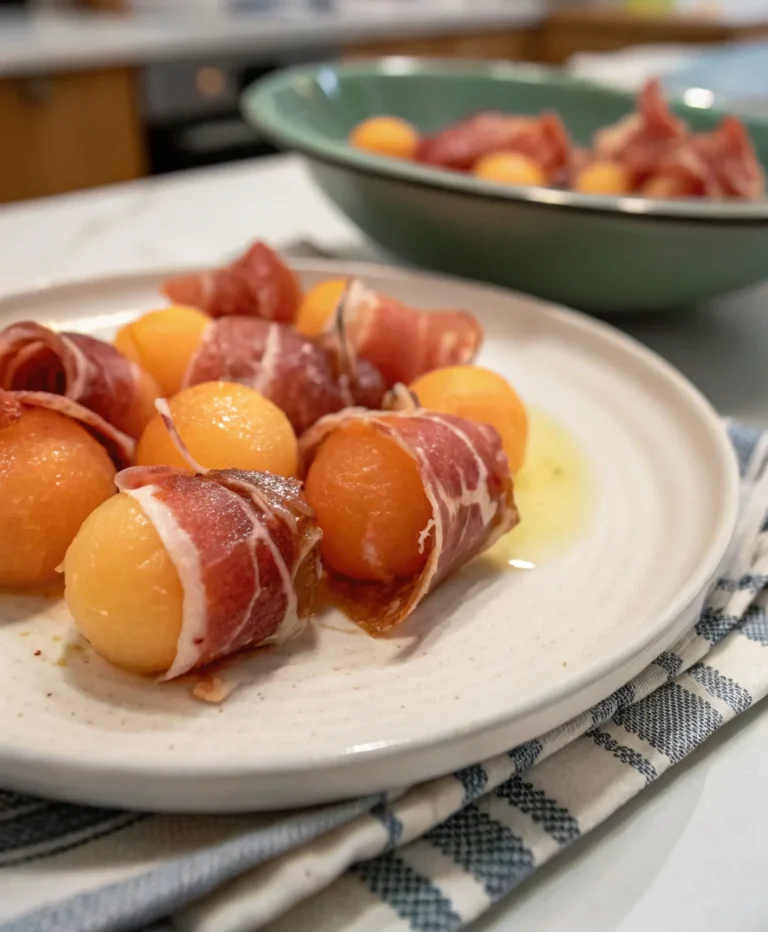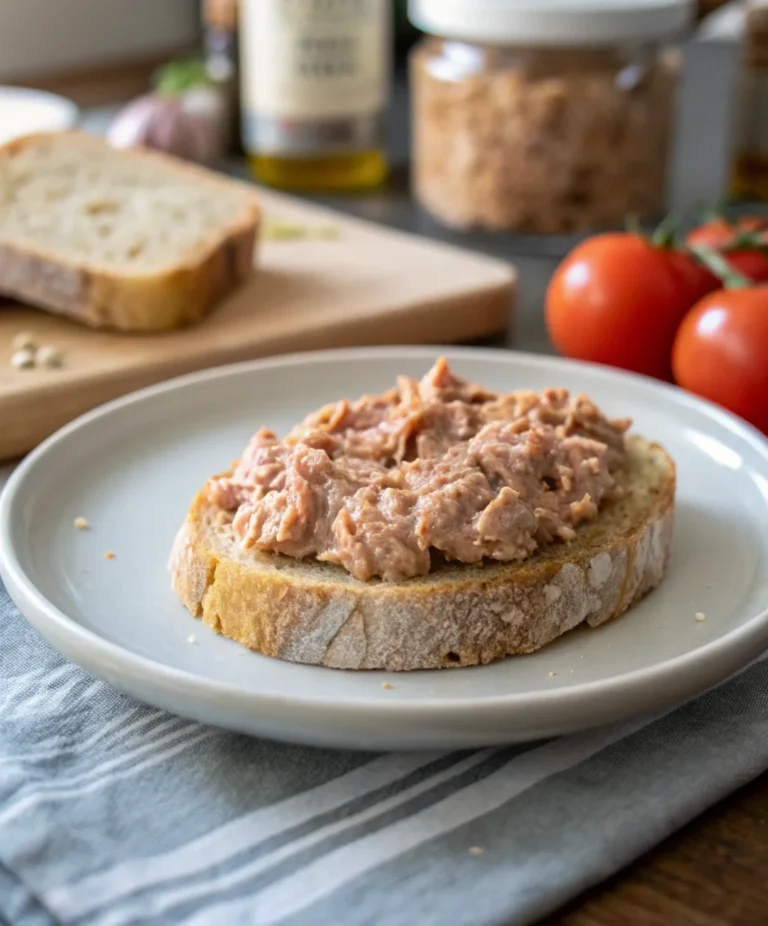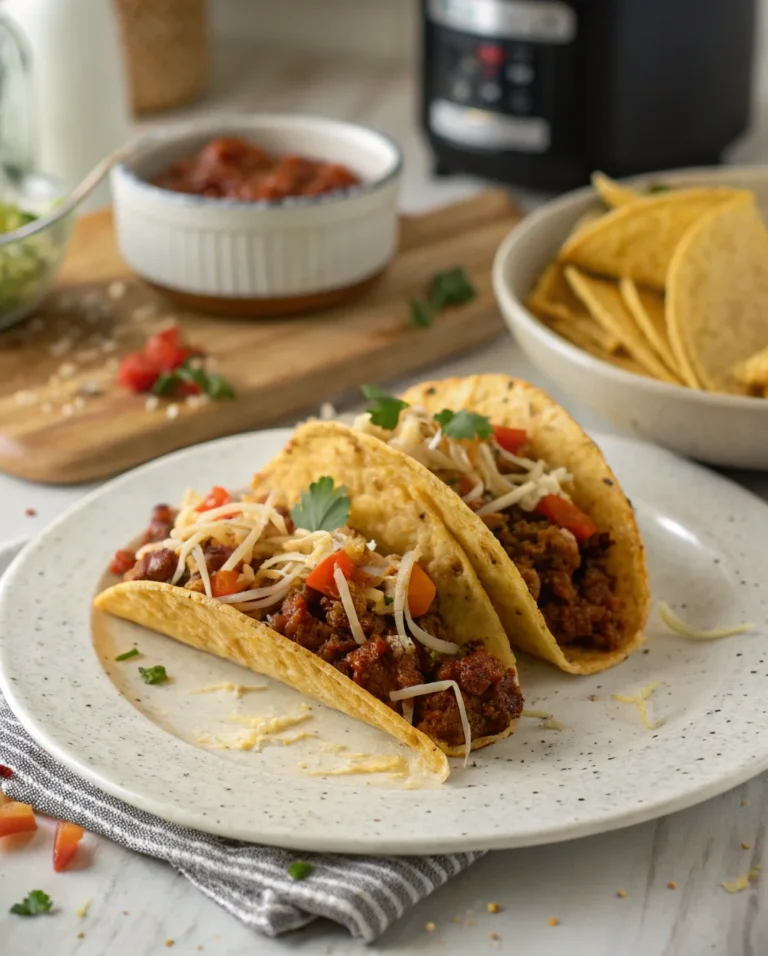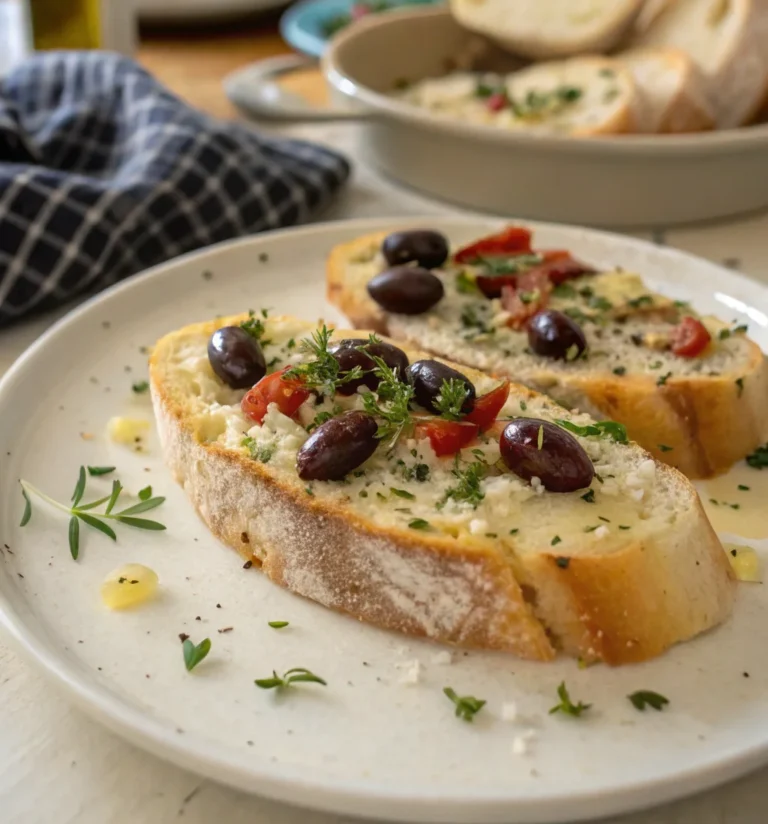Antipasto
Introduction
Ah, antipasto! Just the mention of this Italian classic brings a wave of memories and flavors to life. When I think of antipasto, I’m immediately transported back to my grandmother’s vibrant kitchen, bustling with the sounds of family chatter and the rich aroma of her culinary creations. Her antipasto was always the star of our gatherings—a colorful medley of marinated vegetables and savory tuna that set the stage for the meal ahead. Today, I’m thrilled to share a recipe that captures that same spirit of warmth and hospitality while being perfectly approachable for home cooks of all levels. This version of antipasto combines tender vegetables, tangy olives, and flaky tuna into a symphony of flavors that will tantalize your taste buds and impress your guests. Whether you’re planning a cozy weekend dinner or a festive party, this antipasto is sure to be a crowd-pleaser.
Table of Contents
Why This Recipe Works
• Balanced Flavors: The combination of vinegar and tomato paste creates a tangy, slightly sweet marinade that perfectly complements the vegetables and tuna.
• Textural Contrast: With crisp cauliflower, tender mushrooms, and creamy tuna, this antipasto offers a delightful variety of textures in every bite.
• Versatility: Serve it as an appetizer, side dish, or even a main course. Its diverse ingredients make it suitable for any occasion.
• Make-Ahead Friendly: This recipe can be prepared ahead of time, allowing flavors to meld beautifully overnight.
• Nutrient-Rich: Packed with a variety of vegetables and protein-rich tuna, this dish is as nutritious as it is delicious.
Ingredients
• Cauliflower (4 cups): Chopped into bite-sized pieces for even marination and a pleasant crunch.
• Pearl Onions (4 cups): Adds sweetness; choose fresh for the best flavor.
• Red and Green Bell Peppers (2 cups each): Provides color and a mild sweetness.
• Celery (2 cups): Adds a refreshing crunch and earthy flavor.
• Cucumbers (2): Peeled, seeded, and chopped for a fresh, cool contrast.
• Carrots (2 cups): Their natural sweetness enhances the overall flavor.
• Vegetable Oil (2 cups): Essential for the marinade, helping to meld flavors.
• Distilled White Vinegar (2 cups): Provides the necessary acidity for balance.
• Tomato Paste (6 oz can): Thickens the marinade and adds umami.
• Pickling Spice (1 tbsp): Wrapped in cheesecloth to infuse without overpowering.
• Black Olives (1 cup): Adds a briny depth to the antipasto.
• Pitted Green Olives (1 cup): Their slight bitterness balances the dish.
• Canned Mushrooms (4 cups): Their earthy flavor complements the tangy marinade.
• Tuna (1 ½ 5 oz cans): Drained and flaked for a savory protein boost.
Step-by-Step Instructions
- Soaking the Vegetables: In a large bowl, combine the chopped cauliflower, pearl onions, red and green bell peppers, celery, and cucumbers. Cover with lightly salted water and let them soak for 8 to 12 hours, or overnight. This step helps to soften the vegetables and infuse them with a subtle saltiness. In a separate small bowl, soak the chopped carrots in lightly salted water for the same duration.
- Preparing the Marinade: In a large saucepan, combine the vegetable oil, distilled white vinegar, tomato paste, and the pickling spice wrapped in cheesecloth. Bring this mixture to a boil over medium heat. This is where the magic begins, as the marinade’s flavors develop and blend.
- Cooking the Carrots: Drain and rinse the soaked carrots, then add them to the boiling marinade. Let them cook for about 10 minutes. This ensures the carrots absorb the marinade’s flavors while retaining a bit of their natural crunch.
- Cooking the Remaining Vegetables: Drain and rinse the vegetables from the cauliflower mixture. Add them to the saucepan with the marinade and carrots, cooking for an additional 10 minutes or until the cauliflower is tender yet crisp. This step allows the vegetables to soften slightly while picking up the marinade’s delicious flavors.
- Final Additions: Stir in the black olives, green olives, canned mushrooms, and flaked tuna. Remove the saucepan from the heat and discard the cheesecloth-wrapped pickling spice. These ingredients add depth and complexity to the antipasto, rounding out the dish beautifully.
- Preserving the Antipasto: While still hot, transfer the antipasto mixture to sterile containers and refrigerate. This step is crucial for both flavor development and food safety, allowing the antipasto to chill and the flavors to meld.
Prep Time: 60 minutes
Cooking Time: 20 minutes
Total Time: 570 minutes
Yield: 56 Servings
Table: Calorie Breakdown for a Typical Serving
| Nutrient | Amount |
|---|---|
| Calories | 90 |
| Carbs | 7g |
| Protein | 4g |
| Fat | 6g |
| Sugar | 2g |
Patricia’s Tips for Success
Tip 1: Use fresh, high-quality vegetables for the best flavor and texture.
Tip 2: Ensure the pickling spice is securely wrapped in cheesecloth to prevent loose spices from spreading throughout the dish.
Tip 3: Taste the marinade before adding the vegetables to adjust seasoning if necessary.
Tip 4: If you prefer a spicier kick, consider adding a pinch of red pepper flakes to the marinade.
Tip 5: Sterilize your containers properly to ensure the antipasto stays fresh longer.
Tip 6: Let the antipasto sit in the refrigerator for at least a day before serving to allow the flavors to develop fully.
Tip 7: When serving, bring the antipasto to room temperature for the best flavor experience.
Cooking Variations
Variation 1: Add artichoke hearts for a Mediterranean twist, enhancing both flavor and texture.
Variation 2: Substitute the tuna with cooked chicken or turkey for a different protein option.
Variation 3: For a vegan version, omit the tuna and add more mushrooms or marinated tofu.
Variation 4: Incorporate sun-dried tomatoes for an extra burst of umami and color.
Variation 5: Add capers for an additional layer of briny flavor.
Serving Suggestions
Suggestion 1: Serve the antipasto as a starter alongside crusty bread or breadsticks for a delightful appetizer.
Suggestion 2: Use it as a topping for bruschetta—spread a generous amount on toasted baguette slices for a tasty bite.
Suggestion 3: Pair it with a charcuterie board, offering a refreshing contrast to cured meats and cheeses.
Suggestion 4: Toss it with cooked pasta and a drizzle of olive oil for a quick and satisfying antipasto pasta salad.
Suggestion 5: Present it as part of a larger antipasto platter, complete with cured meats, cheeses, and marinated vegetables.
Additional Thoughts
Antipasto is more than just a dish; it’s a celebration of flavors and cultures that brings people together. Its origins lie in the Italian tradition of serving small bites to stimulate the appetite before the main meal. This concept of ‘before the meal’ is beautifully embodied in our recipe, where the vibrant colors and bold flavors set the stage for a memorable dining experience. The beauty of antipasto lies in its flexibility and adaptability. Depending on the season and what’s available, you can easily swap ingredients while maintaining the dish’s core essence. For instance, in summer, you might add fresh cherry tomatoes or grilled zucchini, while in winter, roasted root vegetables can provide warmth and depth. This adaptability makes antipasto not only a staple in Italian cuisine but also a beloved dish around the world. The key to a great antipasto is balance—between flavors, textures, and temperatures. It’s about creating harmony on the plate, where each ingredient complements the others without overpowering. This balance is what makes antipasto such a joy to prepare and share. As you embark on making this dish, remember that cooking is an art form. It’s about expressing yourself through flavors and techniques, creating something that brings joy to both the cook and the diners. So, enjoy the process, savor each step, and let the antipasto be a reflection of your culinary creativity. Lastly, don’t forget the social aspect of antipasto. It’s meant to be shared, savored, and enjoyed with others. Whether you’re hosting a formal dinner or a casual get-together, serving antipasto is a way to bring people together, encourage conversation, and create lasting memories. So, gather your loved ones, pour a glass of wine, and let the antipasto work its magic.
Join the Conversation
I would love to hear how your antipasto turns out! Did you make any variations or serve it in a unique way? Share your experiences and any tips you might have in the comments below. Your feedback and creativity are what make the Taste Buds Approved community so vibrant and inspiring. Let’s learn from each other and continue to explore the wonderful world of cooking together. Happy cooking!
Conclusion
Creating this antipasto is more than just following a recipe; it’s about embracing the art and joy of cooking. With its vibrant colors, harmonious flavors, and rich textures, this dish is a celebration of everything we love about food—its ability to nourish, delight, and bring people together. Whether you’re a seasoned cook or a kitchen novice, this antipasto is sure to be an exciting addition to your culinary repertoire. So, roll up your sleeves, gather your ingredients, and savor the process as much as the delicious results. Here’s to many more memorable meals and shared experiences around the table. Buon appetito!
Frequently Asked Questions
Q: Can I use frozen vegetables instead of fresh?
A: Fresh vegetables are recommended for the best texture and flavor, but frozen can be used if necessary. Just ensure they’re thoroughly thawed and drained.
Q: How long can I store the antipasto in the refrigerator?
A: Properly stored in sterile containers, it can last up to two weeks in the fridge.
Q: Can I freeze antipasto for later use?
A: Freezing is not recommended as it can alter the texture of the vegetables and the overall taste.
Q: What can I use instead of pickling spice?
A: You can create a homemade mix with bay leaves, mustard seeds, and allspice for a similar flavor profile.
Q: Is there a low-fat version of this recipe?
A: You can reduce the amount of vegetable oil and increase the vinegar for a lighter version, but it may affect the balance of flavors.
Q: How can I make this dish spicier?
A: Add a pinch of crushed red pepper flakes or diced jalapeños to the marinade for an extra kick.
Antipasto
Course: AppetizerCuisine: ItalianDifficulty: MediumThis Antipasto recipe is perfect for making a large batch to enjoy or give away as Christmas gifts. It’s a fun group project that helps cut down on prep time and cost. Feel free to adjust the ingredient amounts as needed.
Ingredients
4 cups chopped cauliflower
4 cups pearl onions
2 cups chopped red bell peppers
2 cups chopped green bell peppers
2 cups chopped celery
2 cucumbers, peeled, seeded, and chopped
2 cups carrots, chopped
2 cups vegetable oil
2 cups distilled white vinegar
1 (6 ounce) can tomato paste
1 tablespoon pickling spice, wrapped in cheesecloth
1 cup black olives
1 cup pitted green olives
4 cups canned mushrooms
1 ½ (5 ounce) cans tuna, drained and flaked
Directions
- In a large bowl, combine cauliflower, pearl onions, red bell peppers, green bell peppers, celery, and cucumbers. Cover with lightly salted water and soak for 8 to 12 hours or overnight.
- In a separate small bowl, place the chopped carrots in lightly salted water and soak for 8 to 12 hours or overnight.
- In a large saucepan, mix vegetable oil, vinegar, tomato paste, and pickling spice. Bring to a boil.
- Drain and rinse the soaked carrots, then add them to the saucepan. Boil for 10 minutes.
- Drain and rinse the vegetables from the cauliflower mixture, then add them to the saucepan. Cook for 10 minutes or until the cauliflower is tender yet crisp.
- Stir in black olives, green olives, mushrooms, and tuna. Remove from heat and discard the pickling spice.
- While still hot, transfer the mixture to sterile containers and refrigerate.

